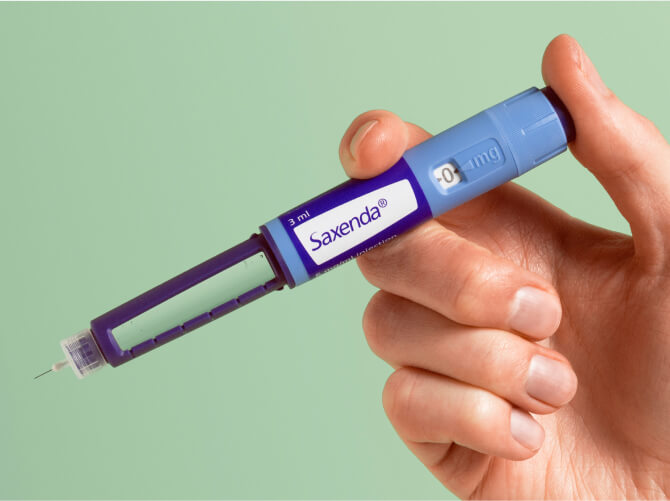weight loss shots
Understanding the Scientific Foundation: How Do Weight Loss Shots Work?
To truly appreciate the power of modern weight loss shots, one must first understand their underlying scientific principles. We are not dealing with simple stimulants or appetite suppressants of the past; instead, we are leveraging the body's own hormonal signaling pathways. The primary class of drugs currently dominating the market are known as GLP1 receptor agonists. GLP1, or glucagonlike peptide1, is a naturally occurring hormone produced in the intestine in response to food intake. Its primary functions include stimulating insulin secretion, suppressing glucagon release, and slowing gastric emptying. These actions lead to a feeling of fullness, reduced food cravings, and better control of blood sugar levels. By mimicking this natural hormone, GLP1 agonists help individuals feel satiated with less food, making it easier to adhere to a reducedcalorie diet. We have also seen the groundbreaking introduction of dual agonists, which target both the GLP1 and GIP (glucosedependent insulinotropic polypeptide) receptors. GIP is another incretin hormone that works synergistically with GLP1 to enhance insulin release and contribute to weight loss. This dual action is a major reason why these newer medications demonstrate even more significant weight reduction in clinical trials.
The Key Players: Semaglutide and Tirzepatide Explained
When we discuss weight loss shots today, two names invariably come to the forefront: Semaglutide and Tirzepatide. Each has its own distinct profile and set of approved uses. We believe that understanding their differences is critical for making an informed decision with your doctor.
Semaglutide: The Pioneer of Modern Weight Loss Injections
Semaglutide is a onceweekly injectable GLP1 receptor agonist. It is perhaps best known by its brand names: Ozempic and Rybelsus (for type 2 diabetes) and Wegovy (specifically approved for chronic weight management). The mechanism of action is elegant: it mimics the GLP1 hormone, signaling the brain to reduce appetite and food cravings. Furthermore, it slows down the rate at which the stomach empties, prolonging the feeling of satiety. We have observed that this controlled release of food from the stomach helps prevent the sharp spikes in blood sugar that often lead to hunger pangs and subsequent overeating. The efficacy of Semaglutide for weight loss is welldocumented in largescale clinical trials. Studies have shown that patients using Semaglutide alongside a lifestyle intervention program can achieve an average weight loss of approximately 15% of their body weight. We consider this a significant and clinically meaningful result that far surpasses what is typically achieved with lifestyle changes alone. It is important to note that while Ozempic and Wegovy contain the same active ingredient, they are approved for different indications and come in different dosing strengths, a distinction that your healthcare provider will explain in detail. The approval of Wegovy for weight management marked a pivotal moment, shifting the conversation from a diabetes treatment with a side effect of weight loss to a dedicated antiobesity medication.

Tirzepatide: The Next Generation Dual Agonist
Tirzepatide represents the next leap forward in this class of medications. It is a onceweekly injection that acts on two different hormonal receptors: GLP1 and GIP. It is sold under the brand name Mounjaro for the treatment of type 2 diabetes and, more recently, Zepbound for chronic weight management. We have found that the dual agonistic action of Tirzepatide provides a more powerful and comprehensive effect on appetite and metabolism. This is reflected in the clinical trial data, which has shown even more impressive weight loss results than Semaglutide. In the SURMONT1 study, participants taking the highest dose of Tirzepatide lost an average of 21% of their body weight. These results are approaching the levels seen with bariatric surgery, a fact that underscores the revolutionary nature of this medication. We believe that this dualaction mechanism not only enhances weight loss but may also offer additional metabolic benefits, making it a compelling option for a wide range of patients. The introduction of Zepbound has provided a dedicated and highly effective tool for a physician's arsenal, specifically designed to address obesity as a chronic disease. We recommend a thorough discussion with your doctor to determine if Tirzepatide is the right fit for your unique health profile and weight loss goals.
Beyond GLP1s: Other Medically Supervised Injections
While GLP1 and GIP agonists are currently leading the charge, they are not the only injectable options available. We have also seen the use of other medications, often in different contexts. Liraglutide, another GLP1 receptor agonist, is administered daily rather than weekly and is sold under the brand names Saxenda (for weight management) and Victoza (for type 2 diabetes). Although it may not achieve the same level of weight loss as its weekly counterparts, it can still be a highly effective option for many individuals. Additionally, we have seen a rise in the use of lipotropic injections, often referred to as "lipo shots" or "B12 shots." These are typically a blend of vitamins, amino acids, and other compounds that are purported to boost metabolism and promote fat burning. From my experience, while these may be part of a broader wellness plan, they do not offer the same profound, systemic weight loss effects as the prescription medications mentioned above. We must be cautious about their marketing, as they are often offered in a nonmedical setting and lack the robust clinical evidence that supports GLP1 and GIP agonists. The key distinction is that the latter are FDAapproved, prescriptiononly medications for obesity, while lipotropic injections are generally considered a supplement. We firmly believe that the most effective and safest approach to weight loss injections is one that is medically supervised and based on proven pharmacological science.
Who is a Candidate for Weight Loss Shots?
The decision to start a course of weight loss injections is a serious medical one that requires a thorough evaluation. We believe it is crucial to move past the misconception that these are for "cosmetic" weight loss and to recognize them as a treatment for a chronic medical condition. The criteria for eligibility are generally based on guidelines from major health organizations, such as the FDA and leading medical societies. We find that the most common candidates are individuals who meet the following criteria:
- A Body Mass Index (BMI) of 30 or greater (classified as obesity).
- A BMI of 27 or greater (classified as overweight) with at least one weightrelated comorbidity. These conditions can include type 2 diabetes, high blood pressure (hypertension), high cholesterol (dyslipidemia), or obstructive sleep apnea.
We also look for individuals who have tried and failed to achieve significant, sustained weight loss through traditional methods of diet and exercise alone. We have observed that these medications are most effective when they are used as a tool to support a comprehensive lifestyle change, not as a standalone "magic bullet." We do not recommend these medications for individuals with a personal or family history of medullary thyroid carcinoma or Multiple Endocrine Neoplasia syndrome type 2, as there is a theoretical risk of thyroid Ccell tumors based on animal studies. A complete medical history, including any history of pancreatitis or gallbladder disease, is a mandatory part of the consultation process. We want to ensure that every patient is a suitable candidate, minimizing risks and maximizing the potential for success.
The Importance of a Medically Supervised Program
From our professional perspective, the most critical component of a successful weight loss journey with injections is the medically supervised program. This is not a medication to be selfadministered without ongoing support. We recommend that patients work closely with a healthcare team that includes a physician, a registered dietitian, and a fitness professional. This team approach allows for:
- Proper Dosing and Titration: The dosage of these medications is gradually increased over several weeks or months to minimize side effects and find the most effective dose for each individual. We find that close monitoring is essential during this phase.
- Management of Side Effects: While generally welltolerated, side effects can occur, most commonly gastrointestinal issues such as nausea, vomiting, diarrhea, and constipation. We have found that these are usually manageable and tend to diminish over time. A medical team can provide strategies and, if necessary, prescriptions to alleviate these symptoms.
- Nutritional Counseling: A dietitian can help create a balanced, reducedcalorie meal plan that complements the effects of the medication. We emphasize the importance of protein intake to preserve lean muscle mass during weight loss.
- Physical Activity Guidance: A fitness professional can help develop a safe and effective exercise plan that supports both fat loss and muscle retention. We stress that exercise is not just about burning calories; it is crucial for overall metabolic health and wellbeing.
- LongTerm Maintenance Strategy: We believe that the biggest challenge is not losing the weight, but keeping it off. A supervised program includes a plan for longterm management, which may involve staying on a lower maintenance dose of the medication or transitioning to a different strategy to prevent weight regain.

We see the medication as a powerful catalyst, but the true, lasting transformation comes from the sustained behavioral changes that a robust support system can help facilitate. The medication provides the "easy button" for appetite control, allowing the patient to focus their energy on building the habits that will serve them for a lifetime.
Navigating the Side Effects and Risks
As with any powerful medication, weight loss shots come with a profile of potential side effects and risks. We are committed to providing a transparent and comprehensive overview, ensuring that patients can make a decision that is fully informed. We find that the most common adverse events are related to the gastrointestinal system, and they often lessen in severity as the body adjusts to the medication. We have observed that these can include:
- Nausea and Vomiting: This is arguably the most common side effect, particularly in the initial weeks of treatment. We often recommend a "slow and steady" approach to dose escalation and suggest patients eat smaller, more frequent meals and avoid fatty or greasy foods.
- Diarrhea and Constipation: These two opposing issues can occur. Staying wellhydrated and increasing dietary fiber can often help manage these symptoms.
- Abdominal Pain and Bloating: A feeling of fullness or discomfort in the stomach is also a reported side effect, often due to the delayed gastric emptying.

While these are the most frequently encountered side effects, there are other, less common but more serious risks that we must be aware of and monitor for. We believe in being fully transparent about these potential issues:
- Pancreatitis: There have been rare reports of acute pancreatitis, a serious inflammation of the pancreas, in patients taking these medications. We urge patients to seek immediate medical attention if they experience severe, persistent abdominal pain.
- Gallbladder Issues: Rapid weight loss, regardless of the method, can increase the risk of developing gallstones. We recommend monitoring for symptoms like severe pain in the upper right abdomen.
- Thyroid Tumors: Animal studies have shown a link between GLP1 agonists and thyroid Ccell tumors, including medullary thyroid carcinoma. While this has not been confirmed in humans, we advise against using these medications in individuals with a personal or family history of this type of cancer.

We want to stress that for the vast majority of patients, the benefits of significant weight loss—which can include a reduced risk of heart attack, stroke, and type 2 diabetes—far outweigh these risks. However, a candid discussion with a healthcare provider about one's personal and family medical history is a nonnegotiable step before starting treatment.

The Role of Lifestyle in Sustaining Success
From my professional experience, I can unequivocally state that weight loss shots are not a substitute for a healthy lifestyle. We view them as a powerful tool to make a healthy lifestyle more attainable and effective. We have seen that the most enduring success stories are those in which the medication is used as a springboard to build lasting habits. We recommend focusing on a few key areas:
Nutrition: Fueling Your Body for Optimal Results
The medication will reduce your appetite, but it will not make food choices for you. We have observed that many patients find it easier to make healthier choices and control portion sizes. We recommend a diet rich in lean proteins, complex carbohydrates, and healthy fats. Protein is particularly important for satiety and for preserving muscle mass during weight loss. We believe that a registered dietitian is an invaluable asset in this process, helping to create a plan that is both nutritious and sustainable.

Physical Activity: Beyond Just Burning Calories
Exercise is a critical but often misunderstood component of a weight loss journey. While it does contribute to calorie expenditure, its most profound benefits are metabolic. We have seen that regular physical activity improves insulin sensitivity, builds muscle (which boosts metabolism), and enhances mood. We recommend a combination of cardiovascular exercise (like walking, jogging, or cycling) and strength training. Even a moderate amount of activity, such as a brisk walk for 30 minutes a day, can make a significant difference. The medication can make it easier to start a new fitness routine by reducing the physical burden of carrying excess weight.
Mental and Emotional Wellbeing: Addressing the Whole Person
Obesity is not just a physical condition; it has deep psychological and emotional roots. We have found that many people who struggle with their weight have a complicated relationship with food. The medication can help break the cycle of emotional eating and food addiction by reducing cravings. However, it does not erase the underlying issues. We recommend that patients seek support from a therapist or a support group to address the psychological aspects of weight management. We believe that a holistic approach that nurtures both the body and the mind is the key to achieving and maintaining a healthy weight for life.
The Future of Weight Loss: What's Next?
The field of weight loss injections is rapidly evolving. We are on the cusp of an even newer generation of medications. We have already seen the emergence of retatrutide, a tripleagonist that targets not just GLP1 and GIP but also the glucagon receptor. Early clinical trial data is showing even more impressive results, with a potential for even greater weight loss. We also anticipate new oral formulations that may make these treatments more accessible for those who are needleaverse. The research is constantly pushing the boundaries, and we expect to see more targeted, effective, and safer options in the coming years. We believe that this is a very exciting time in the fight against obesity, and we are committed to staying at the forefront of these developments. We will continue to update our resources to provide the most current and accurate information available.
Comments
Post a Comment